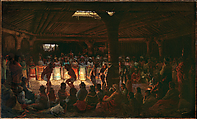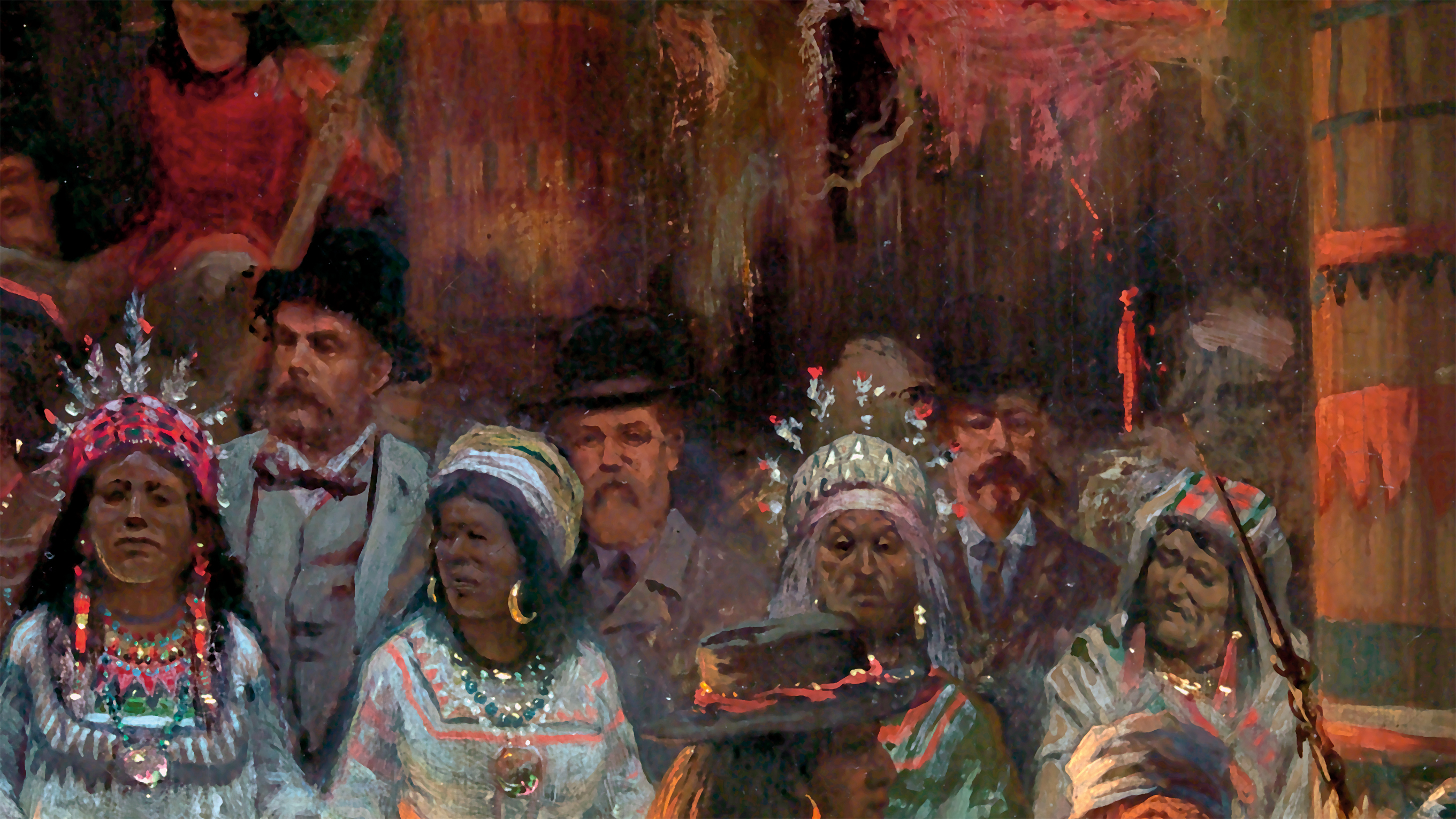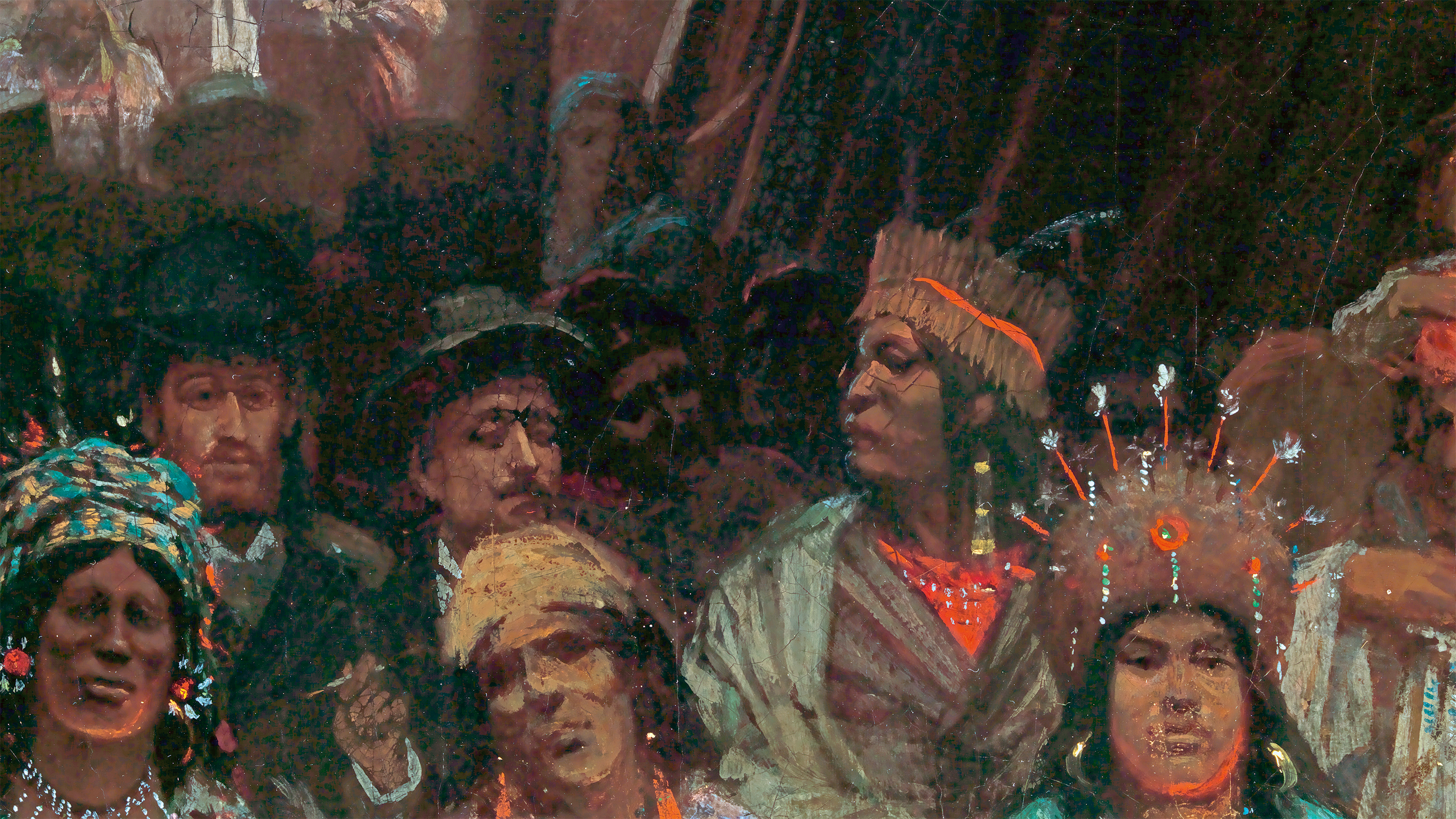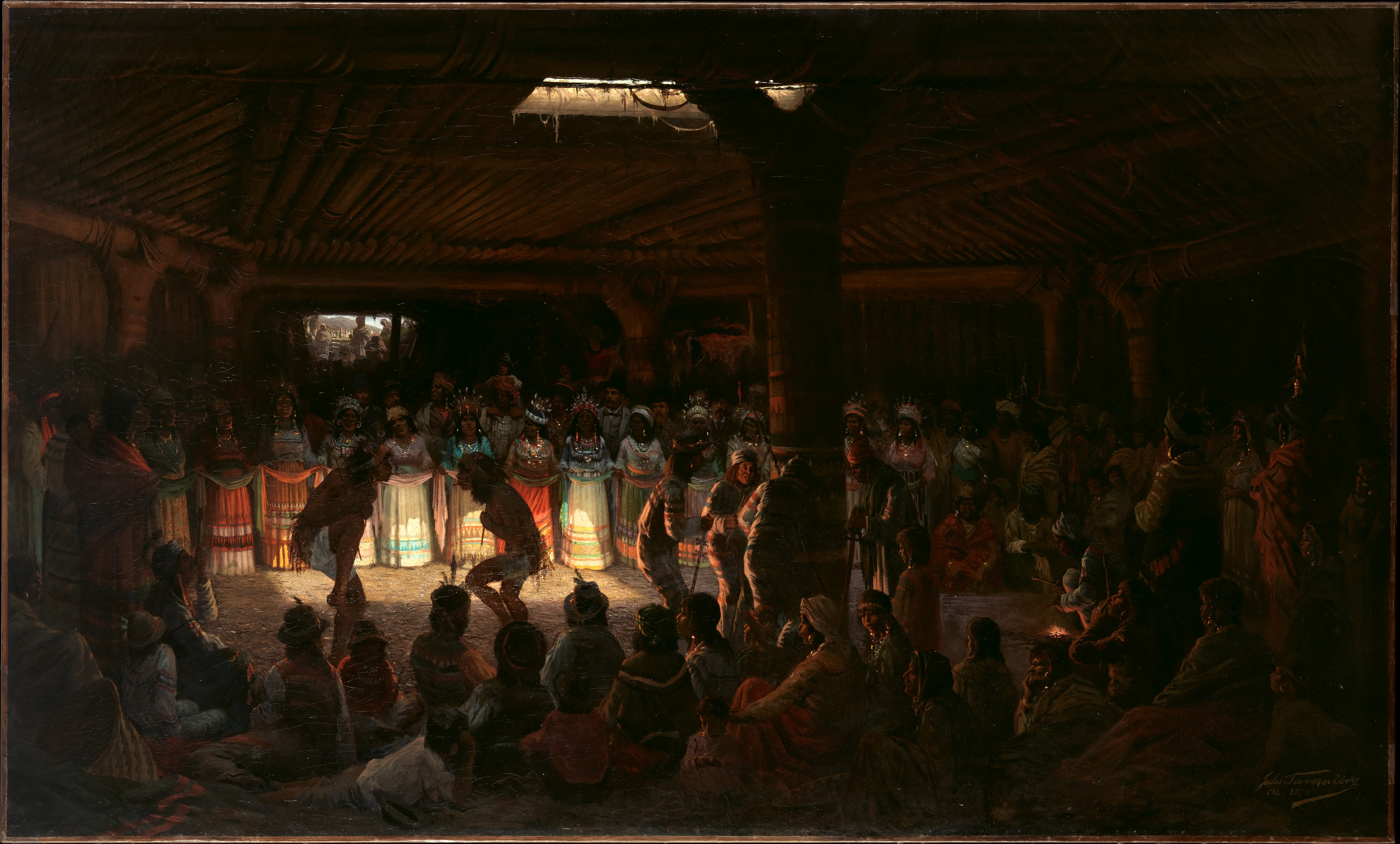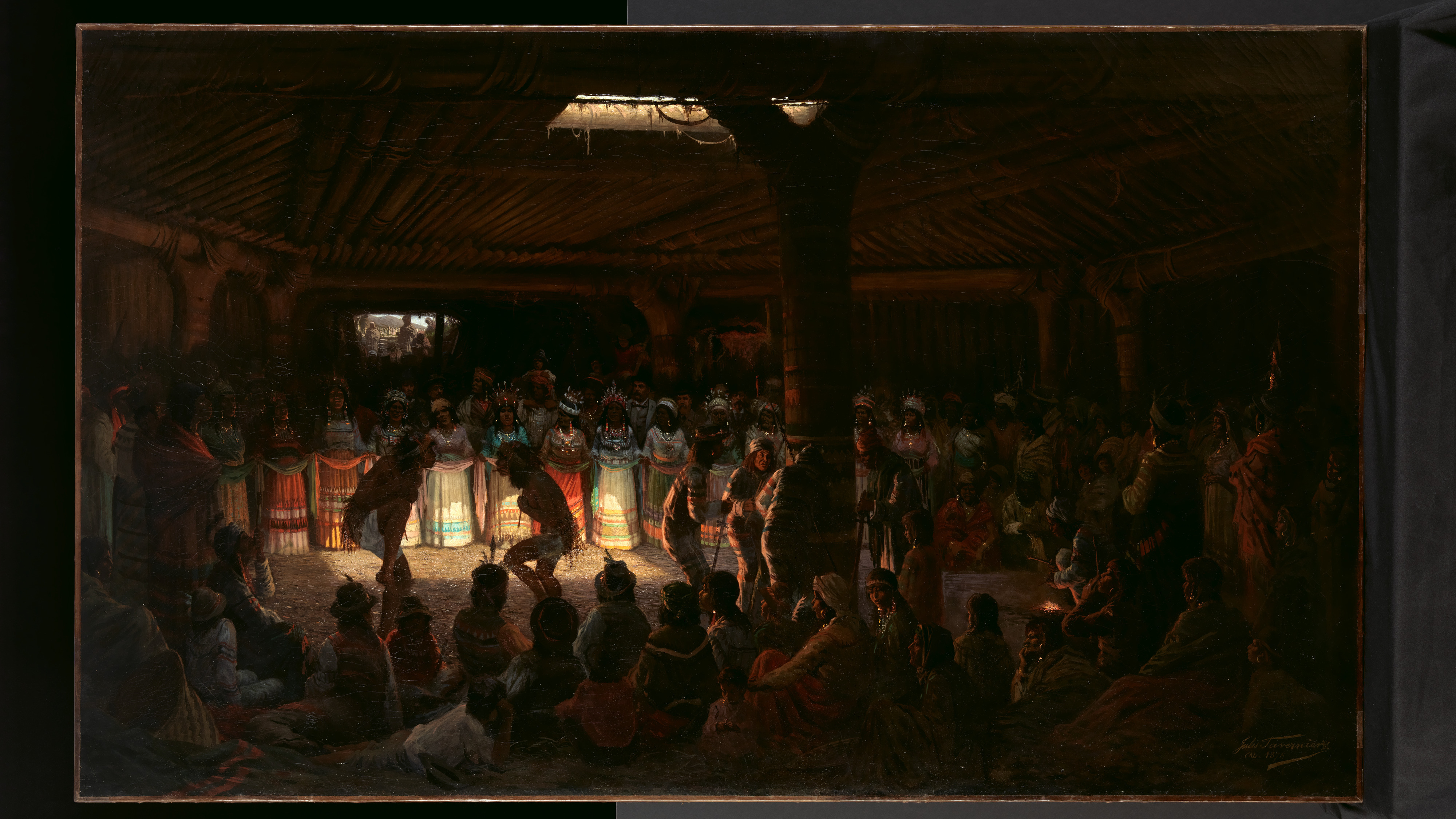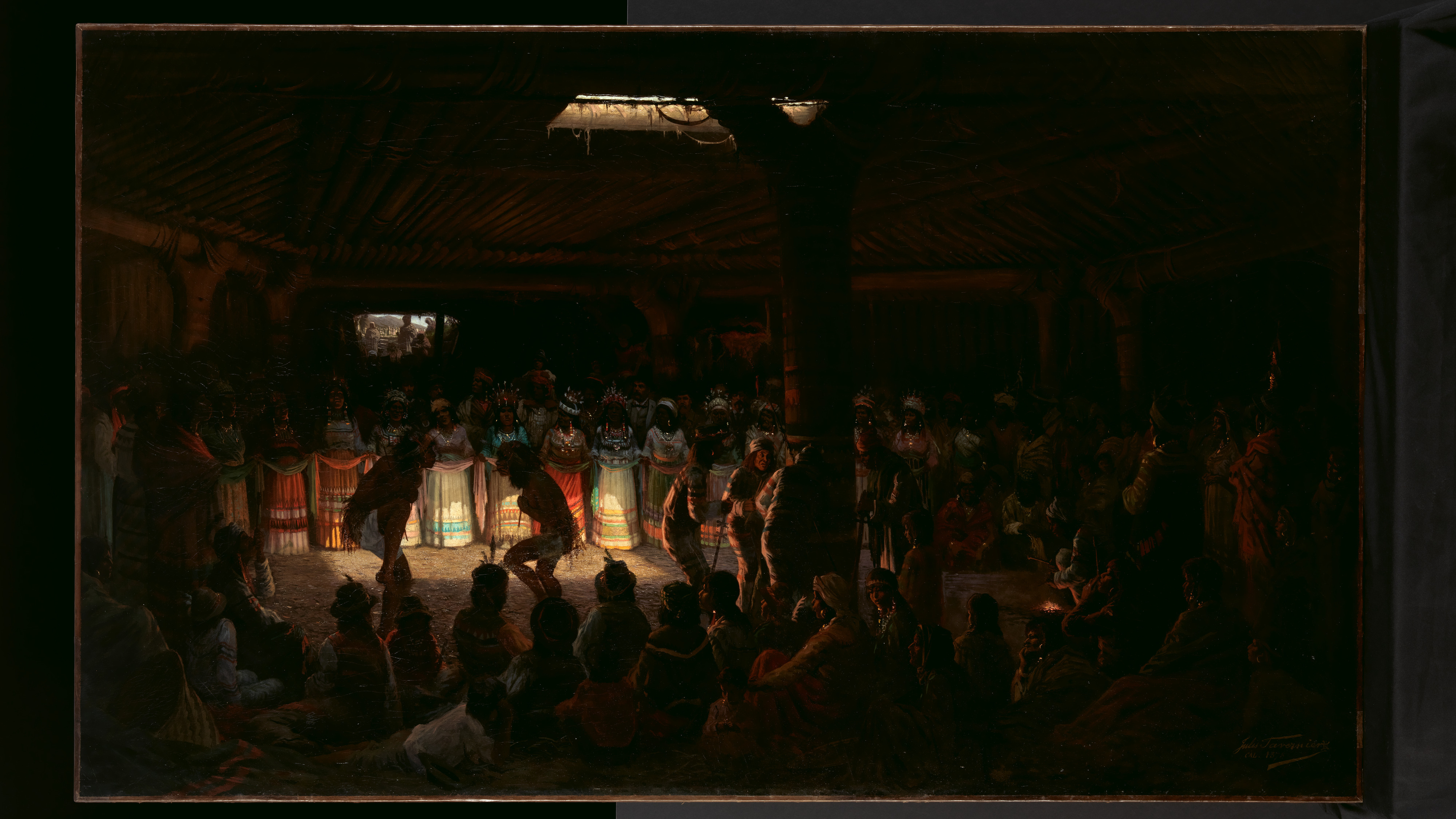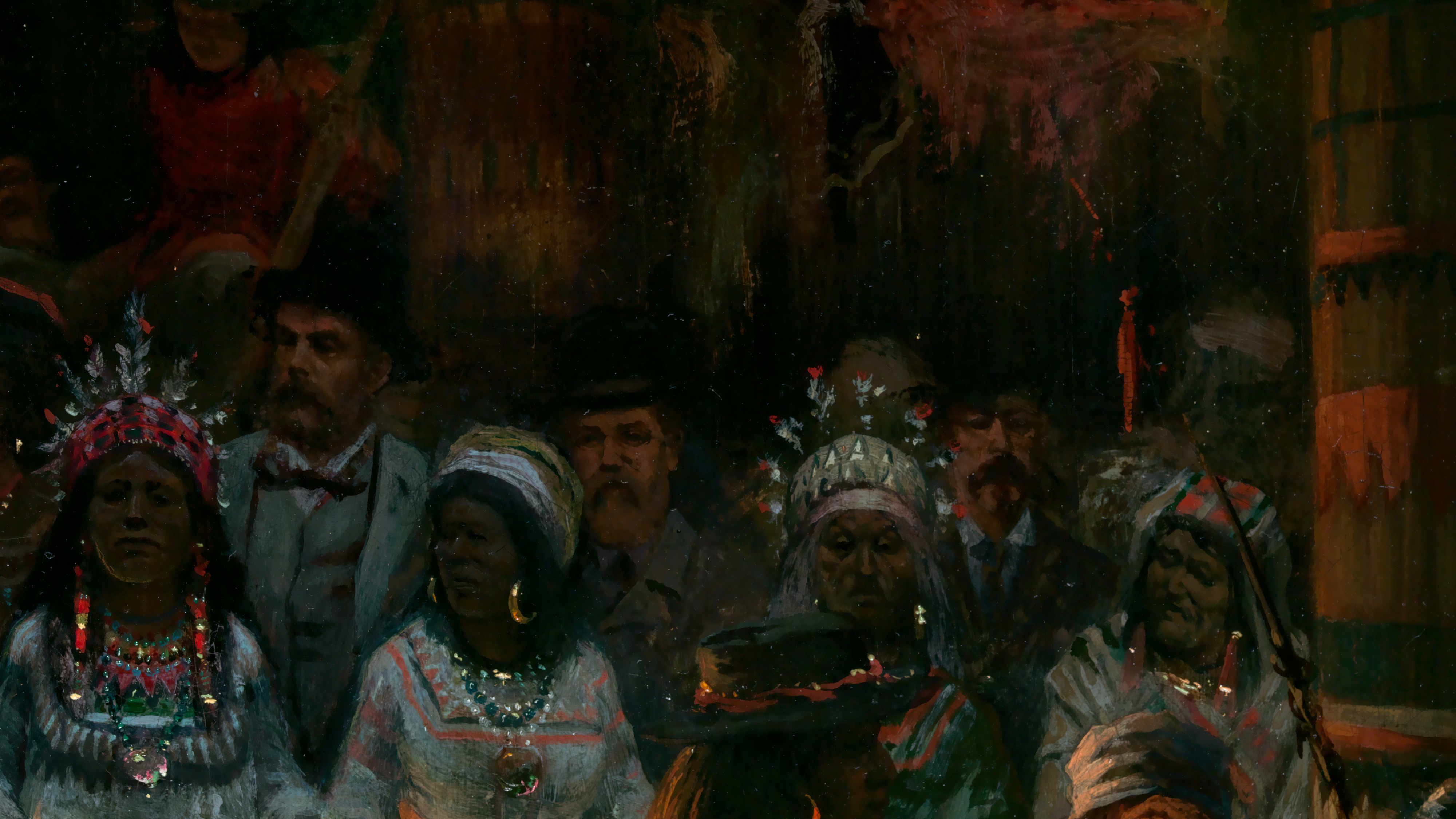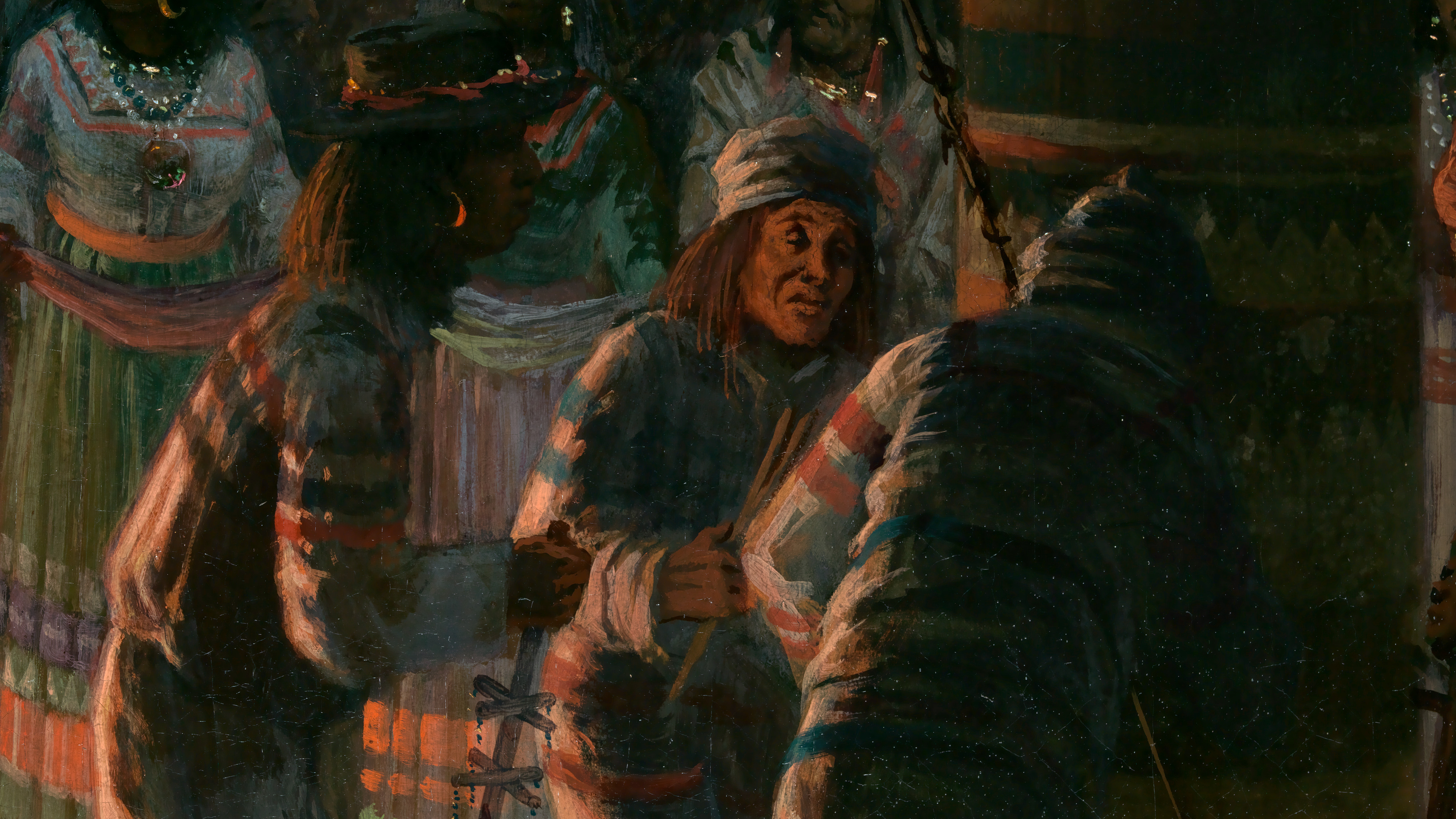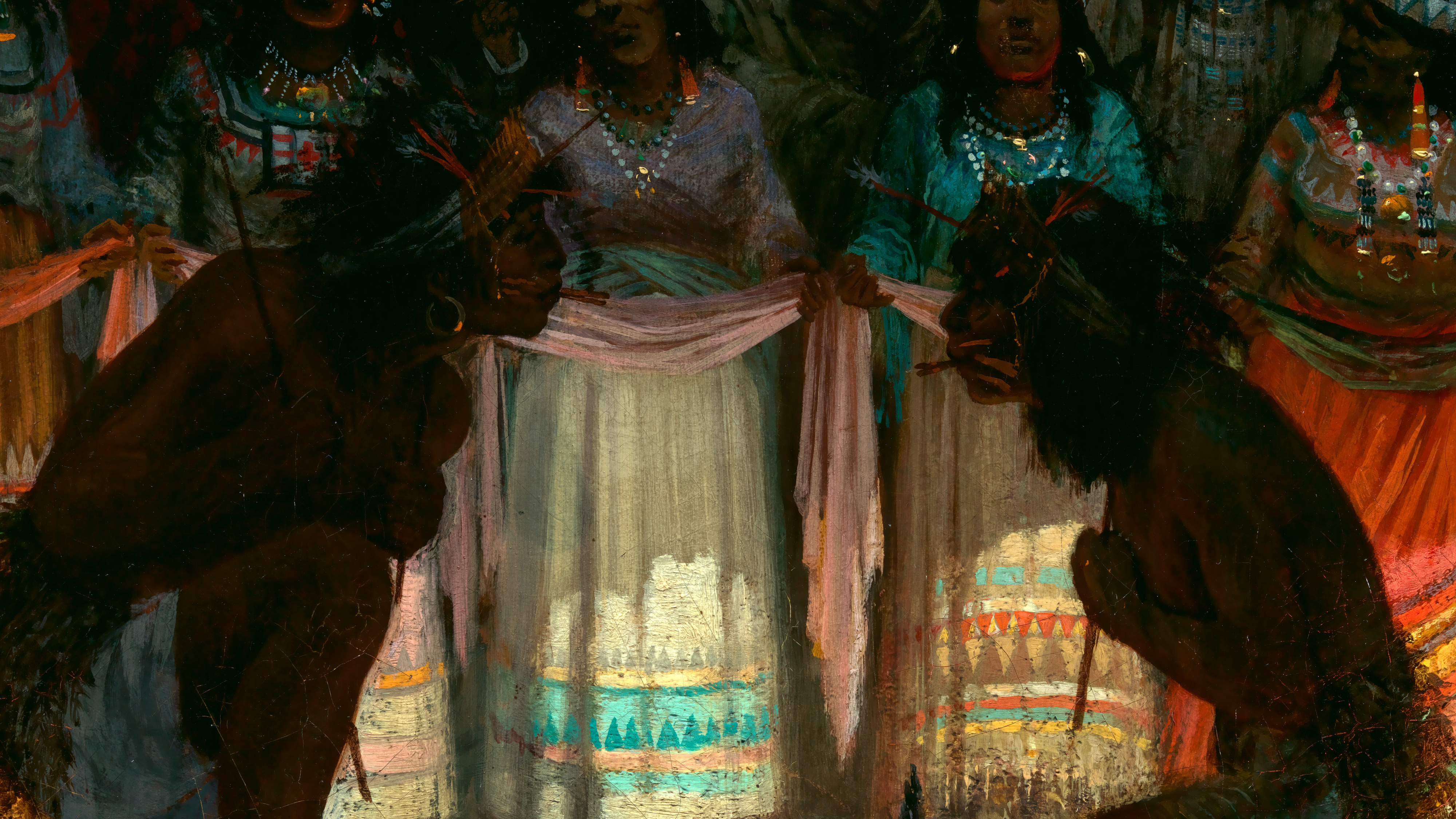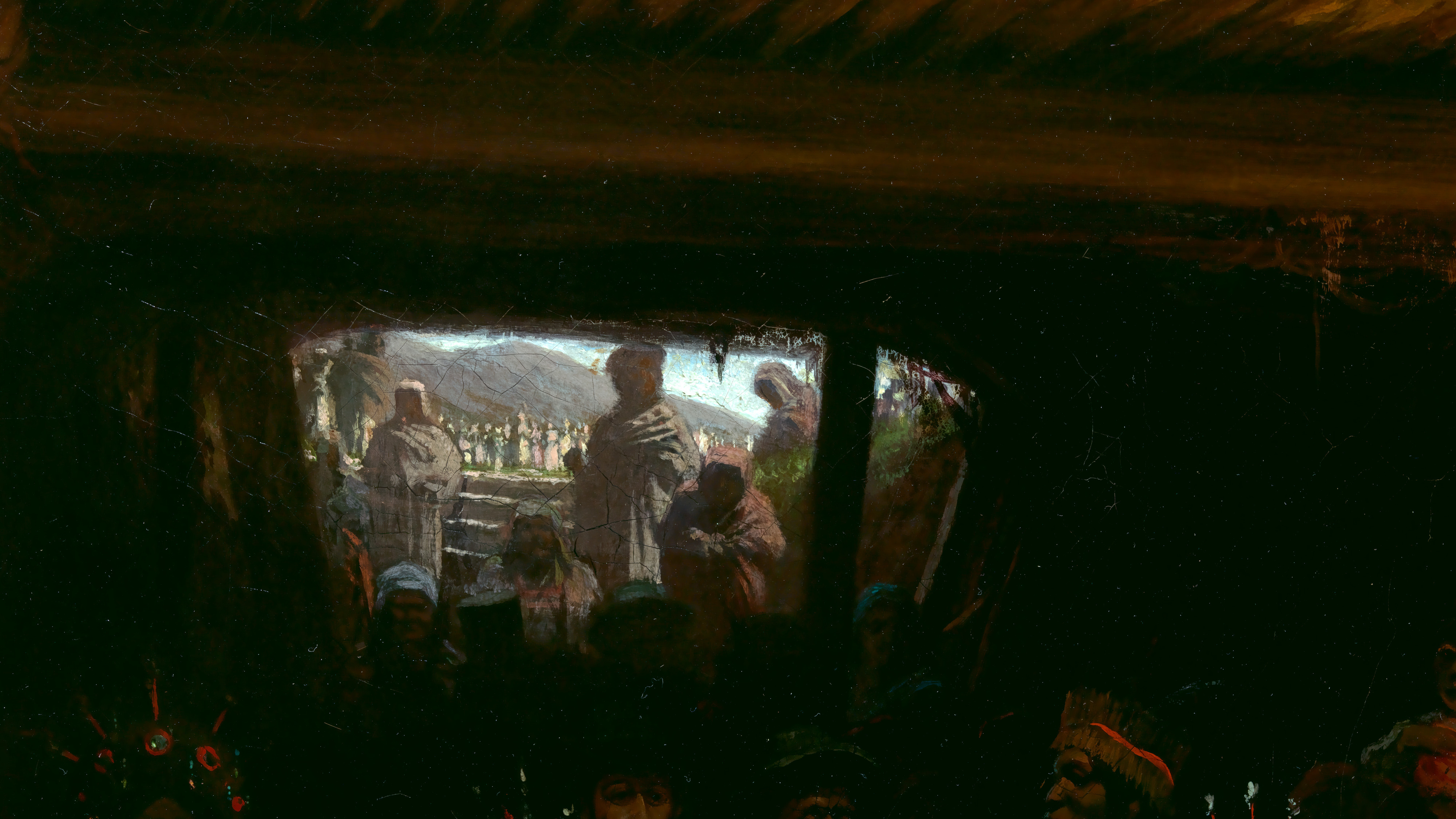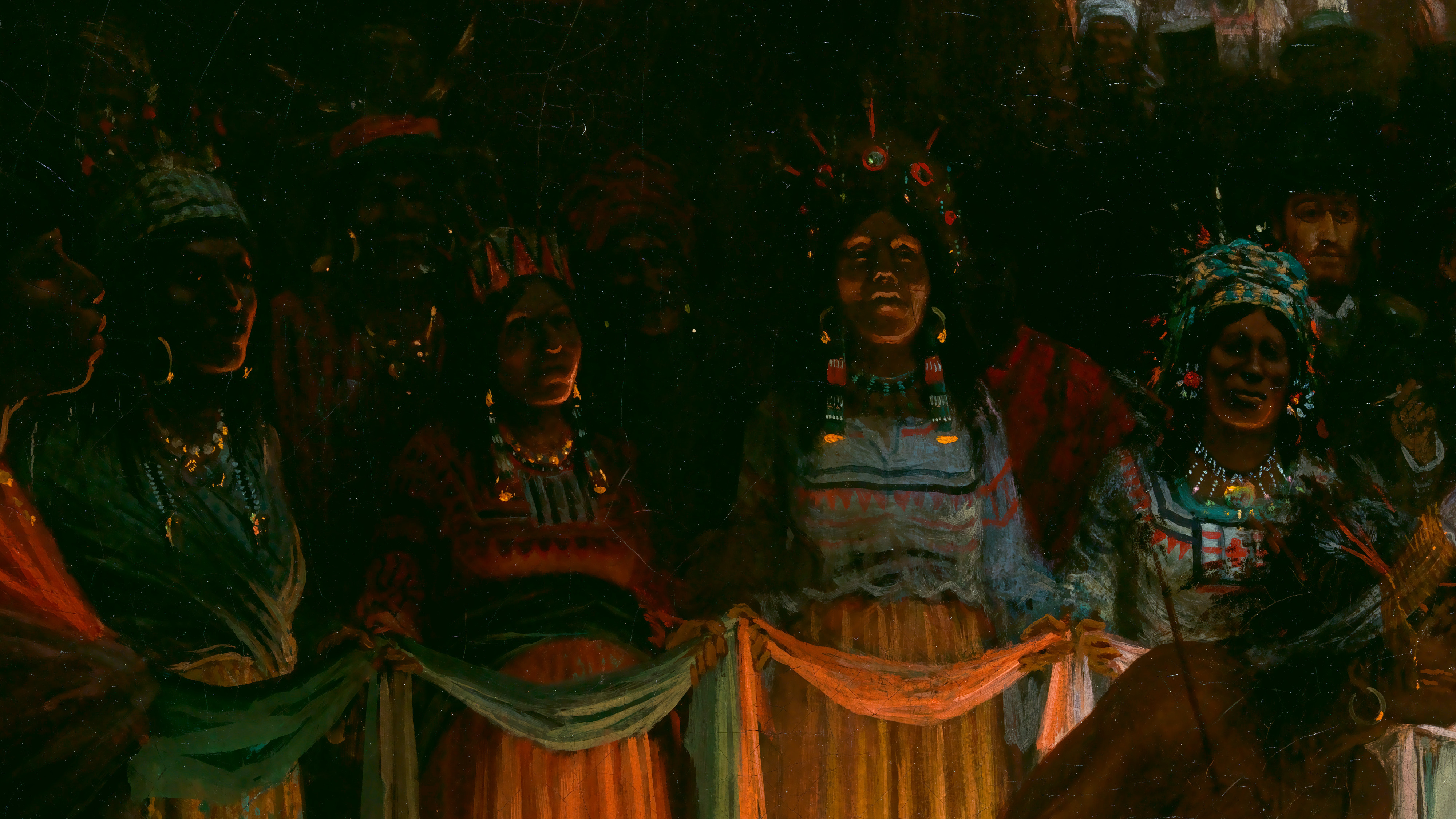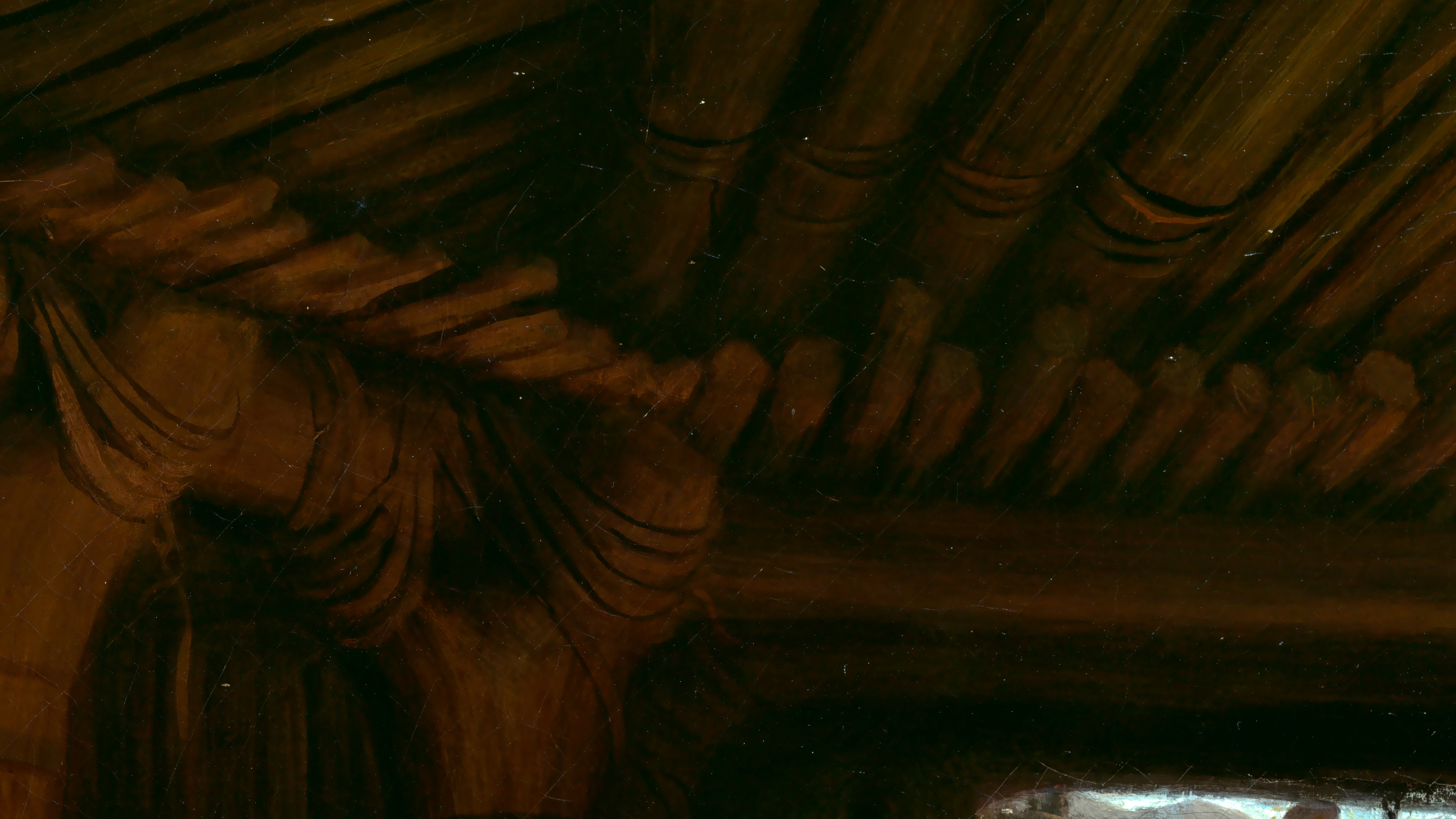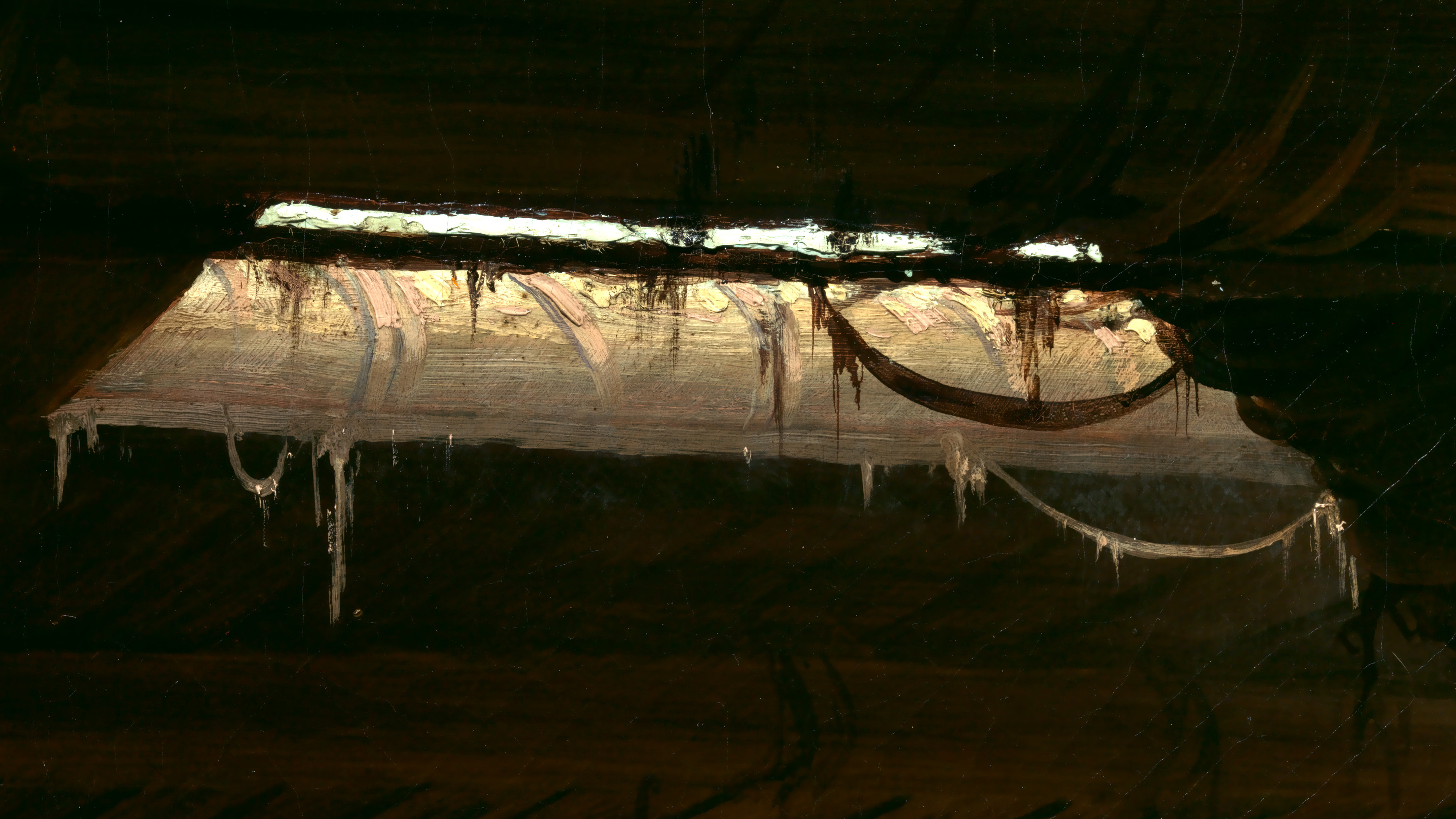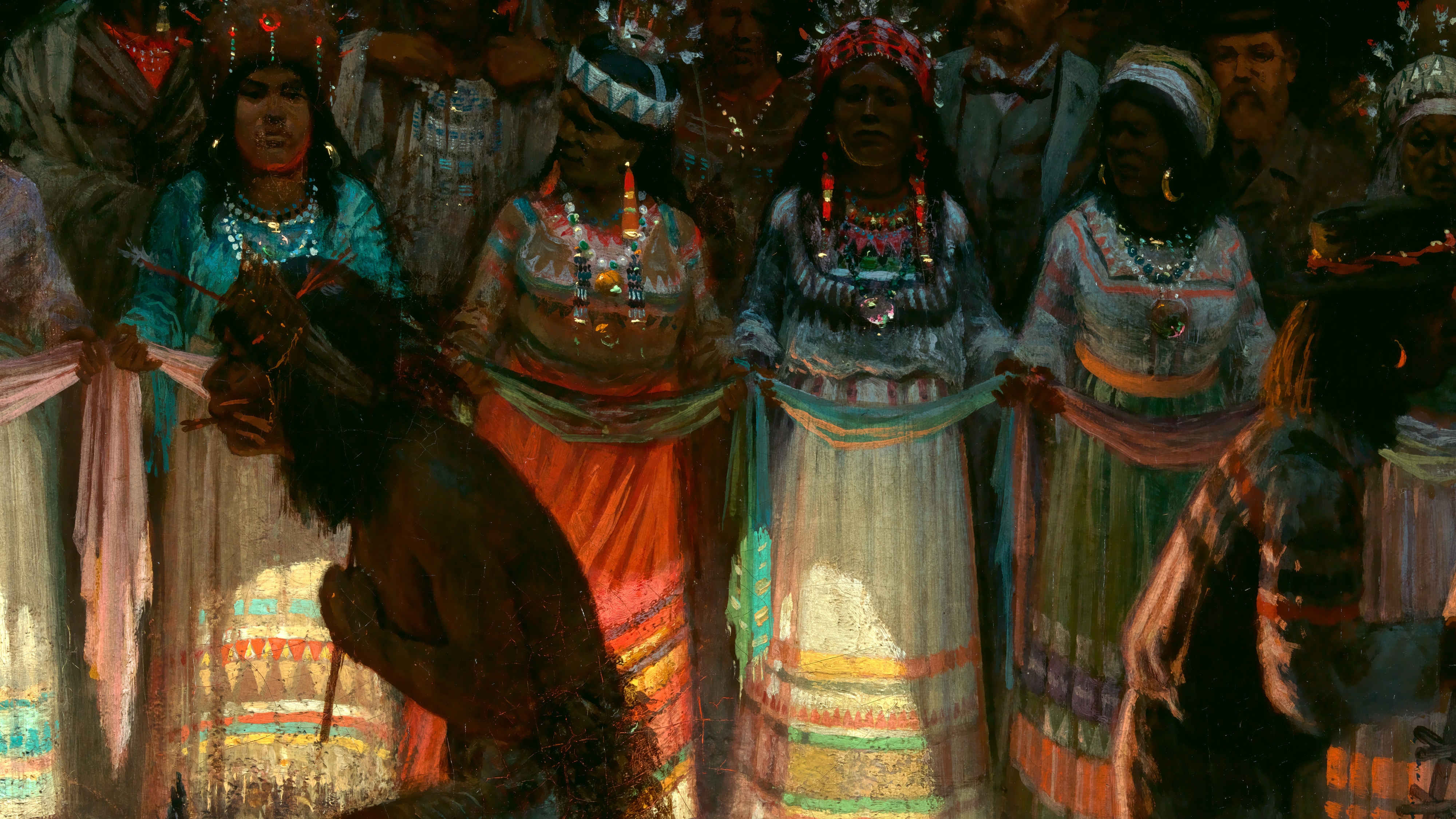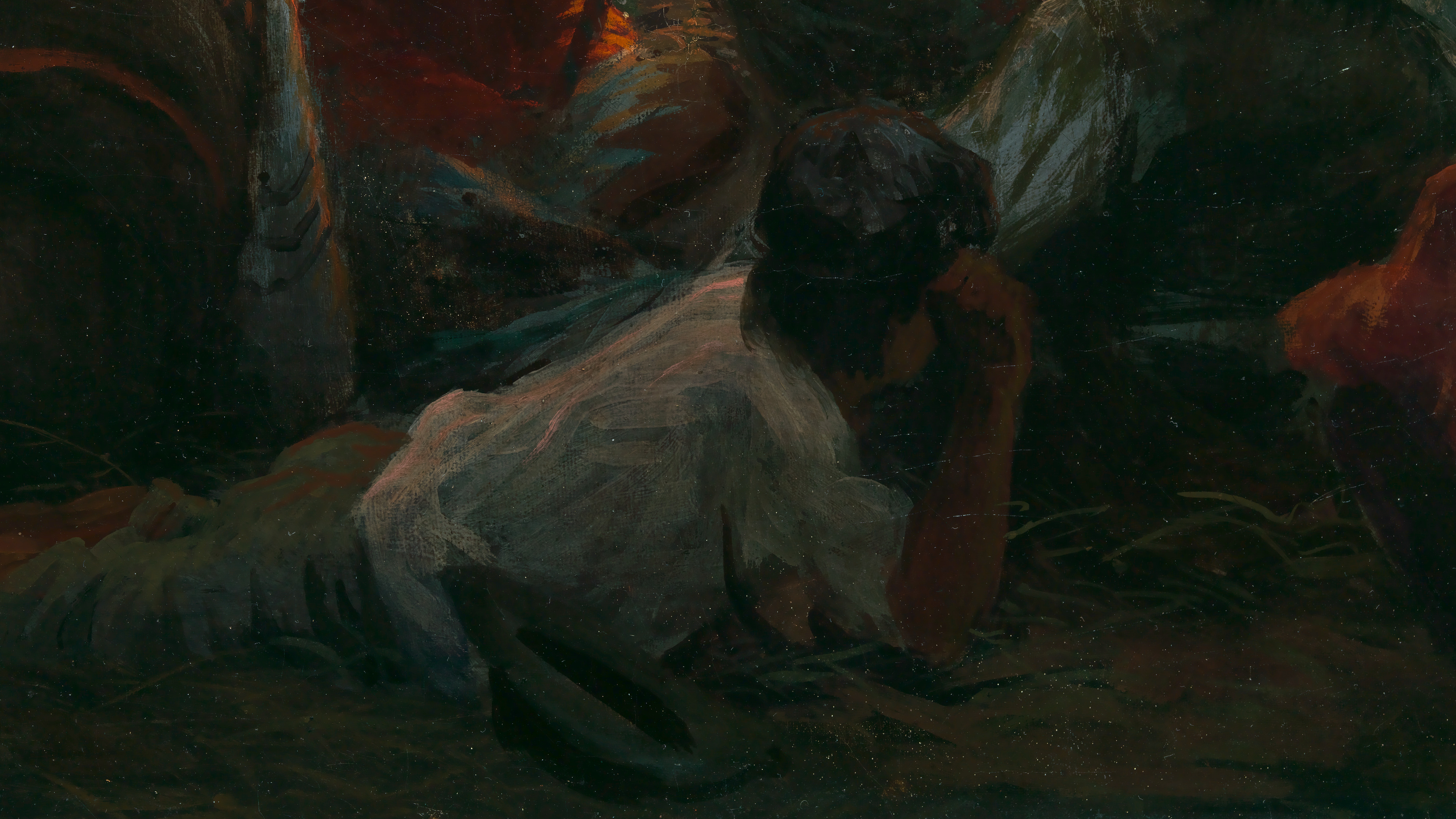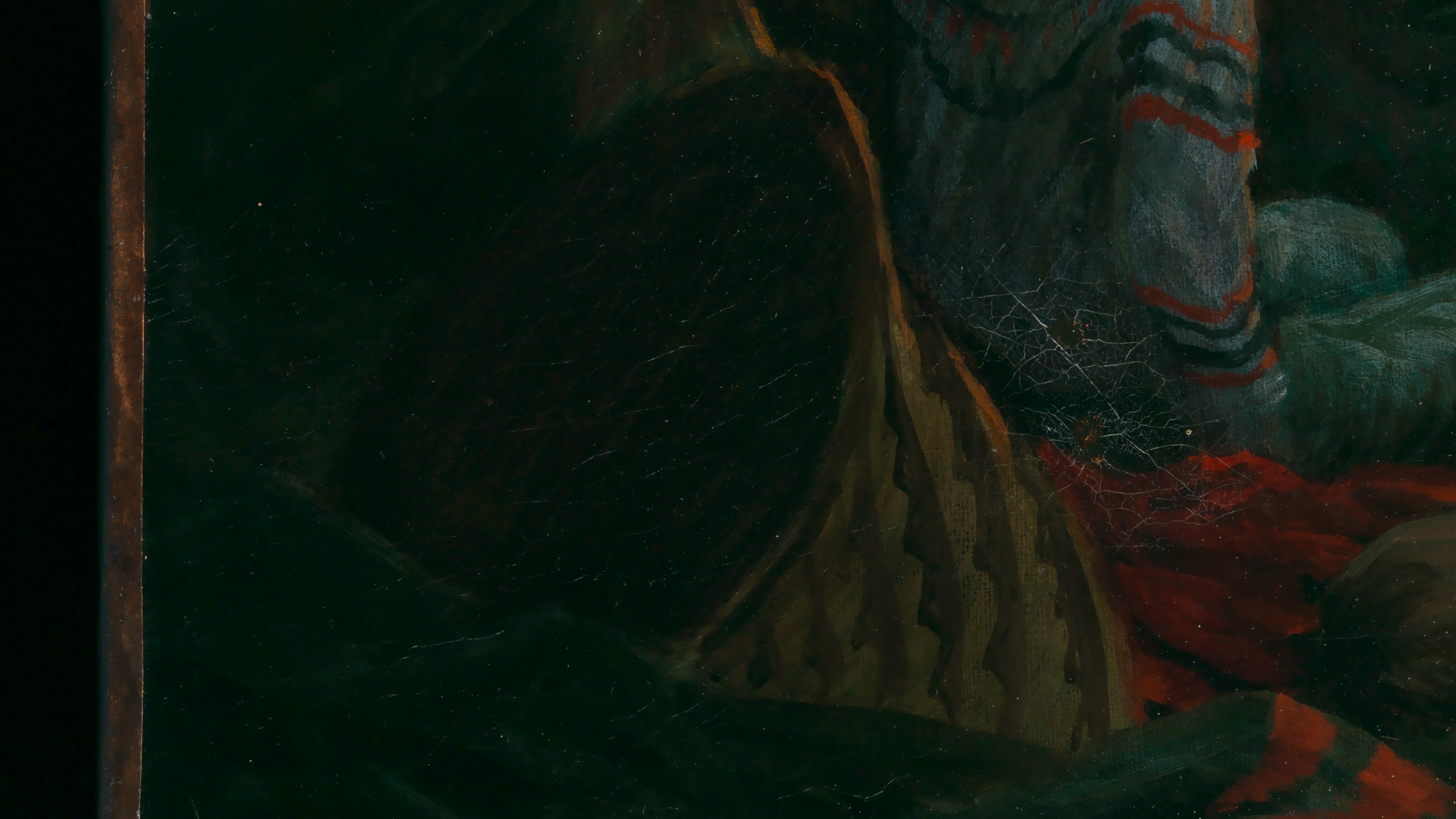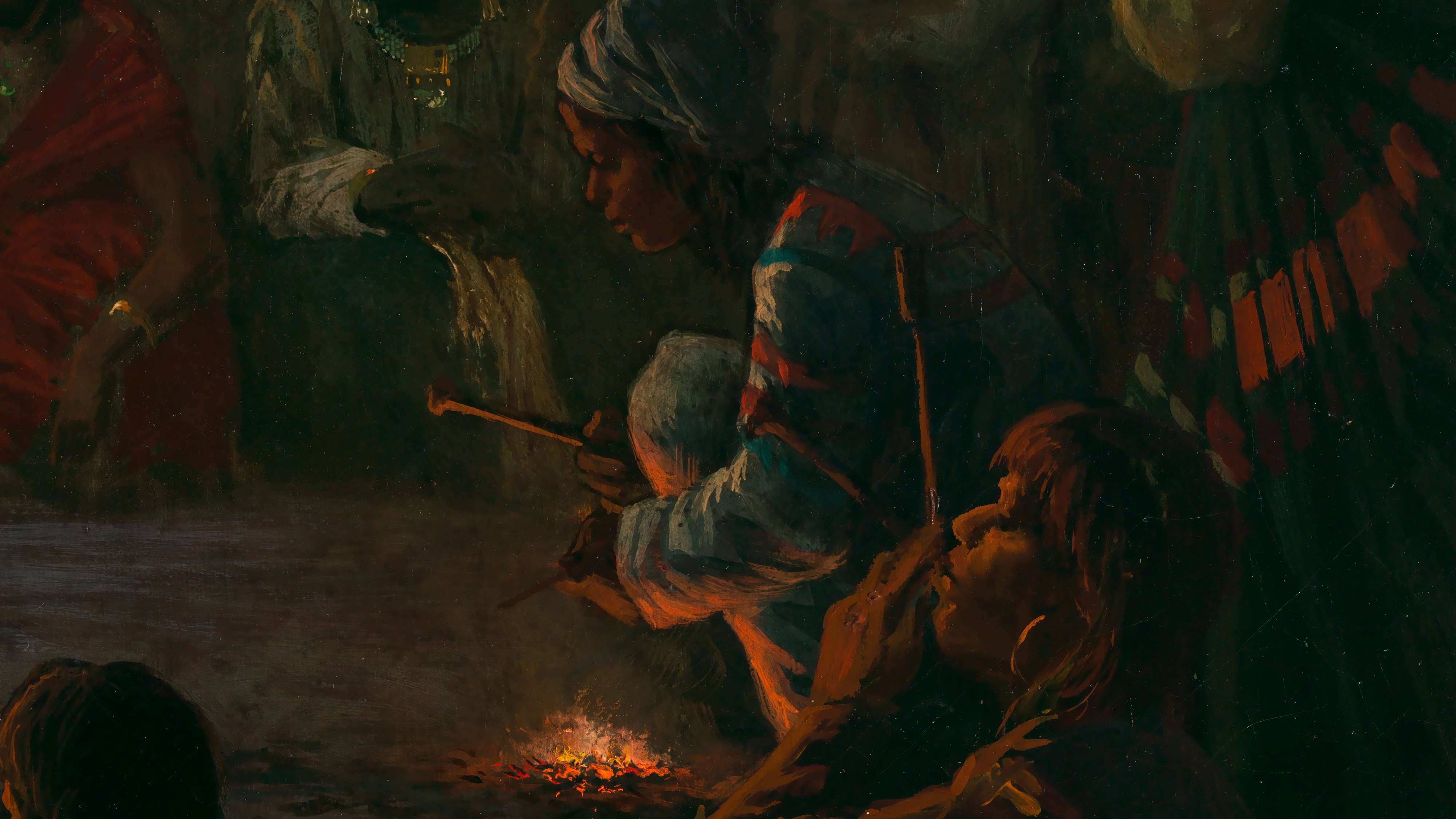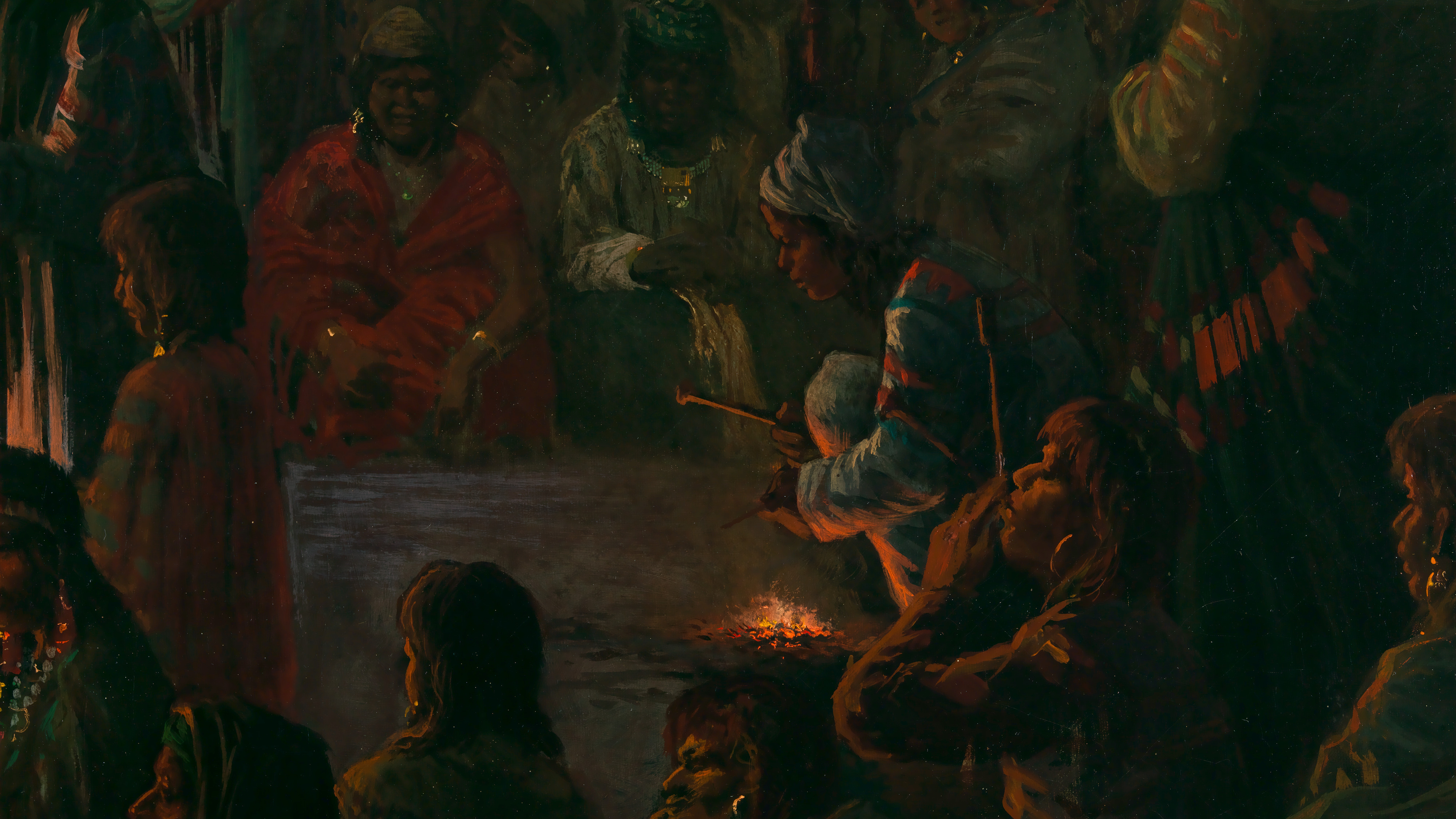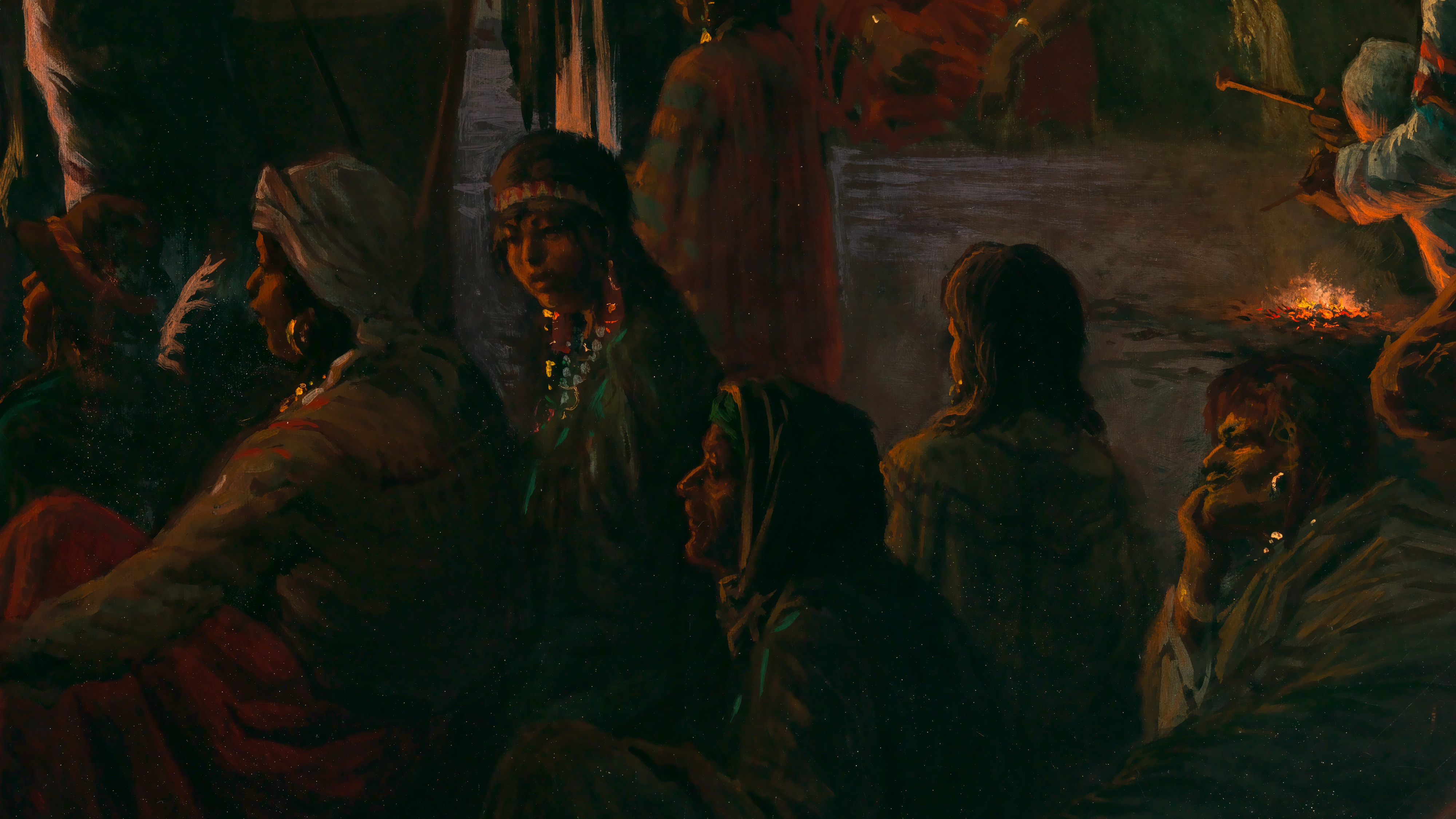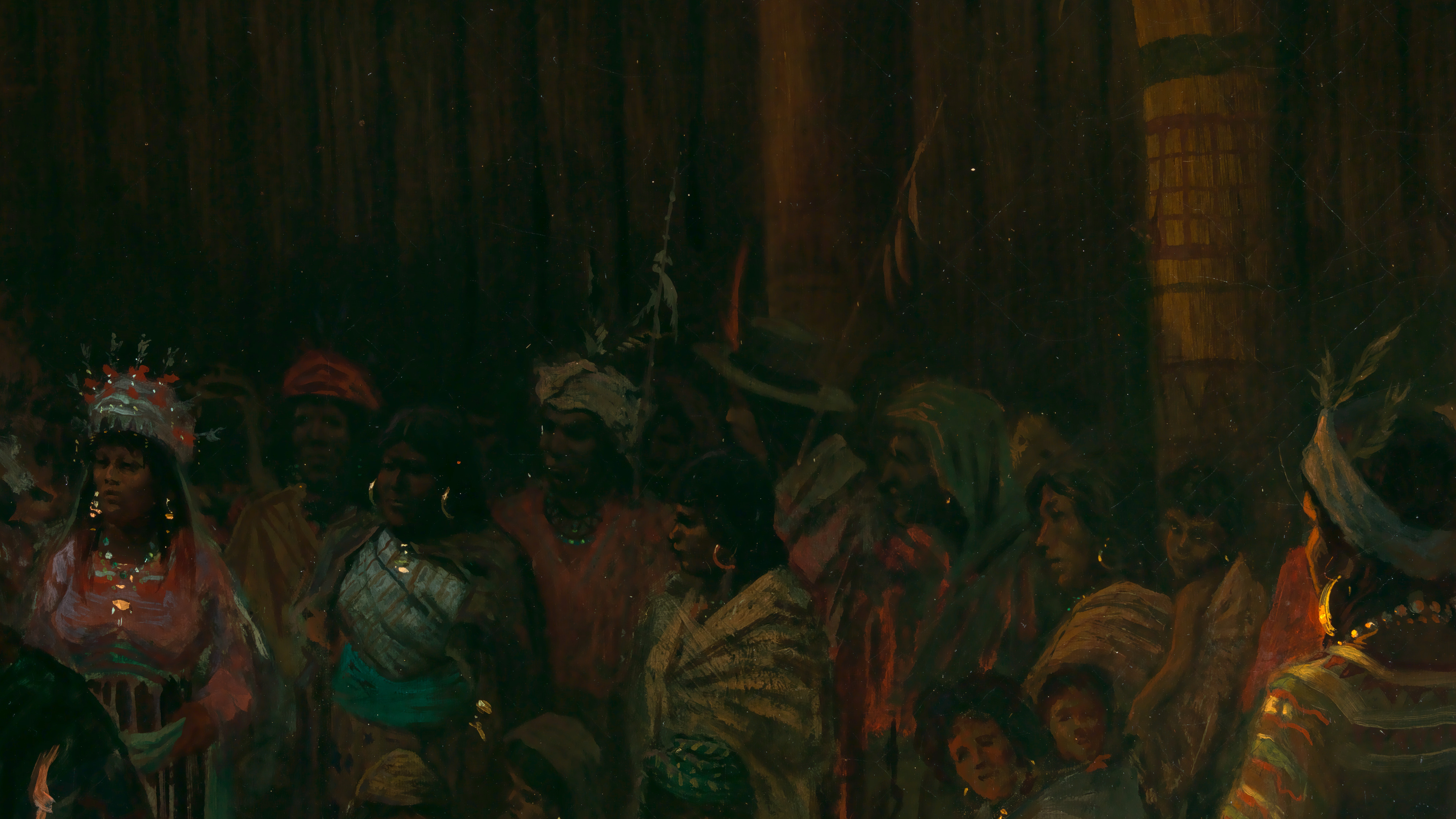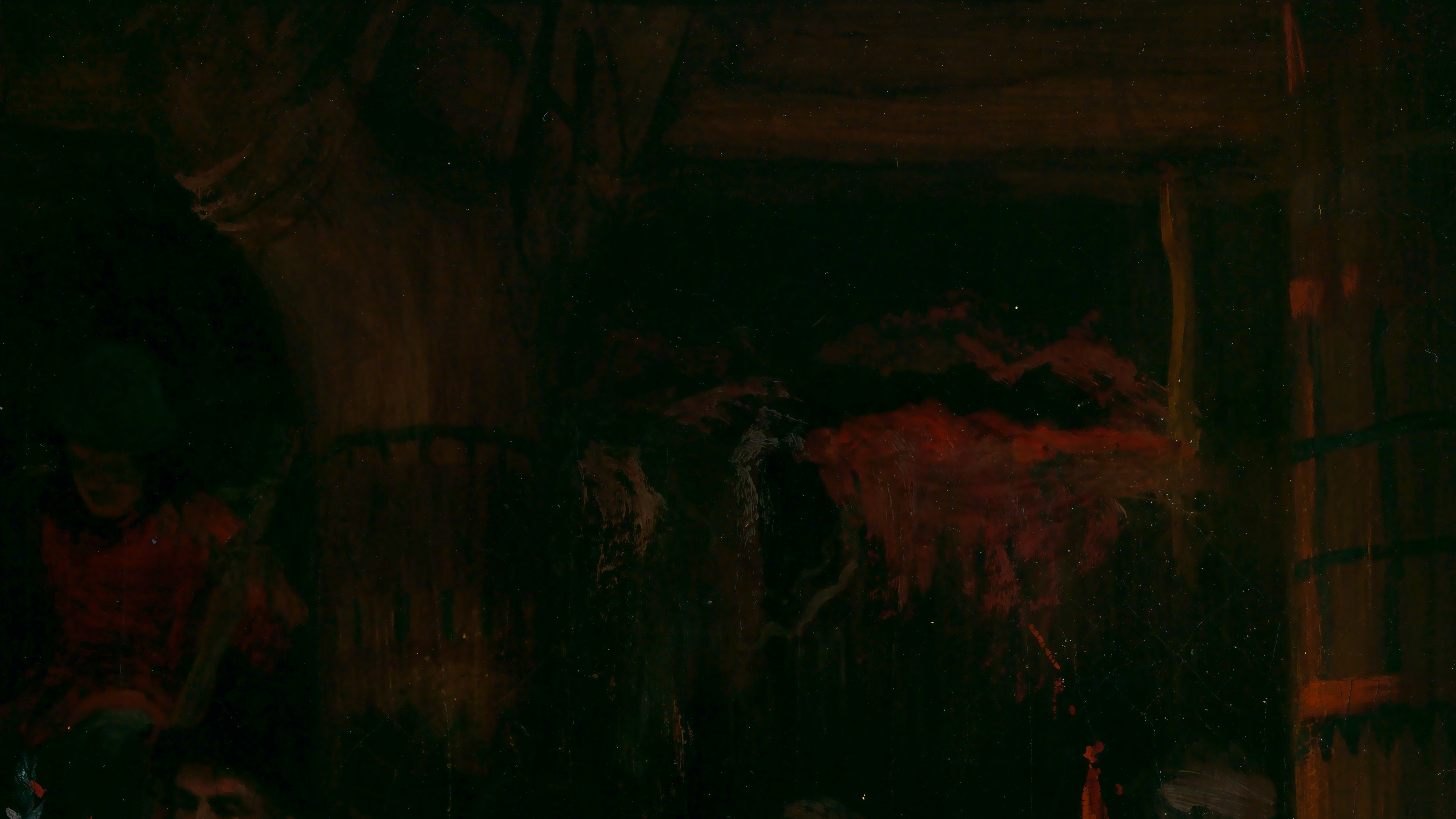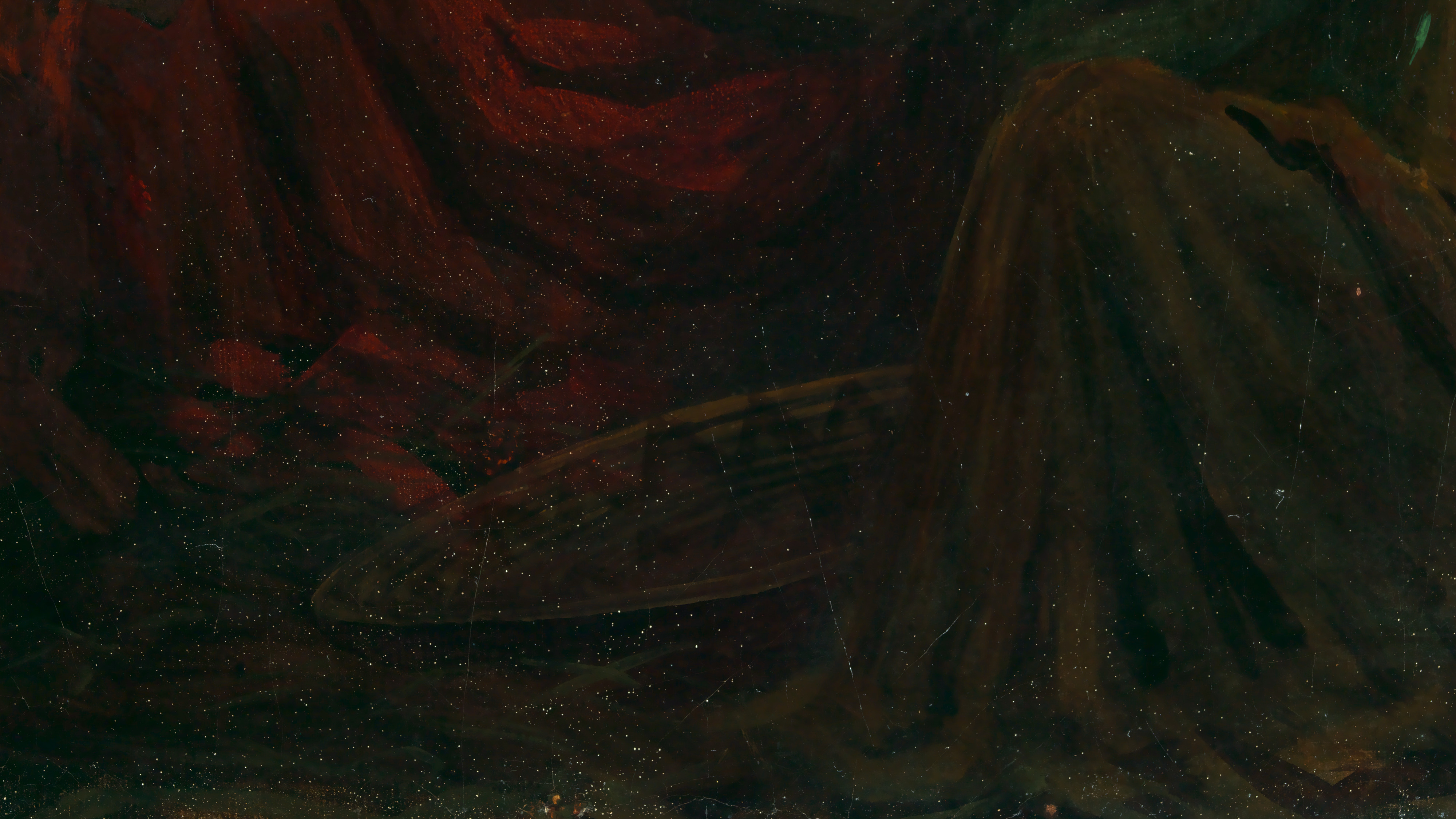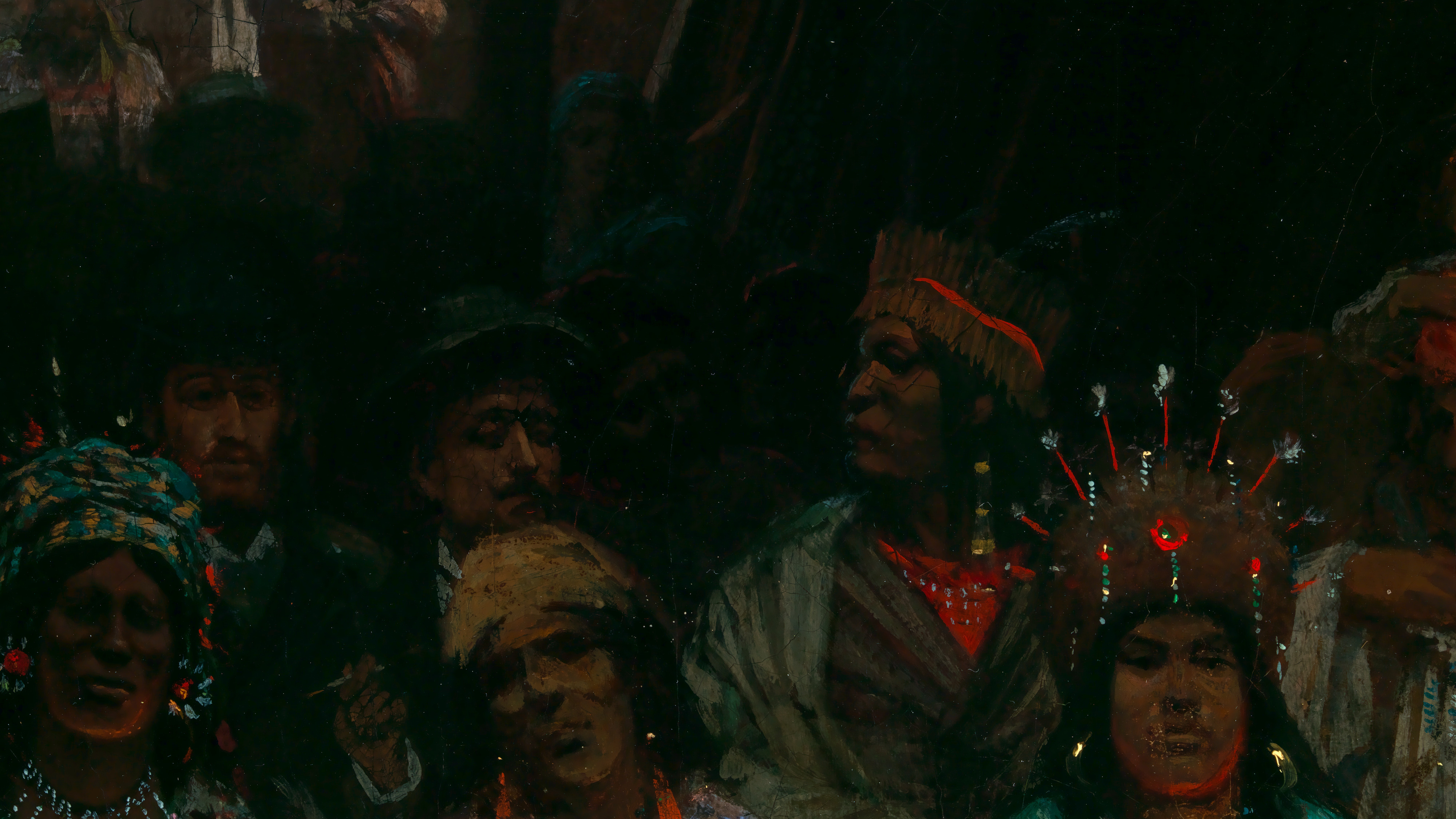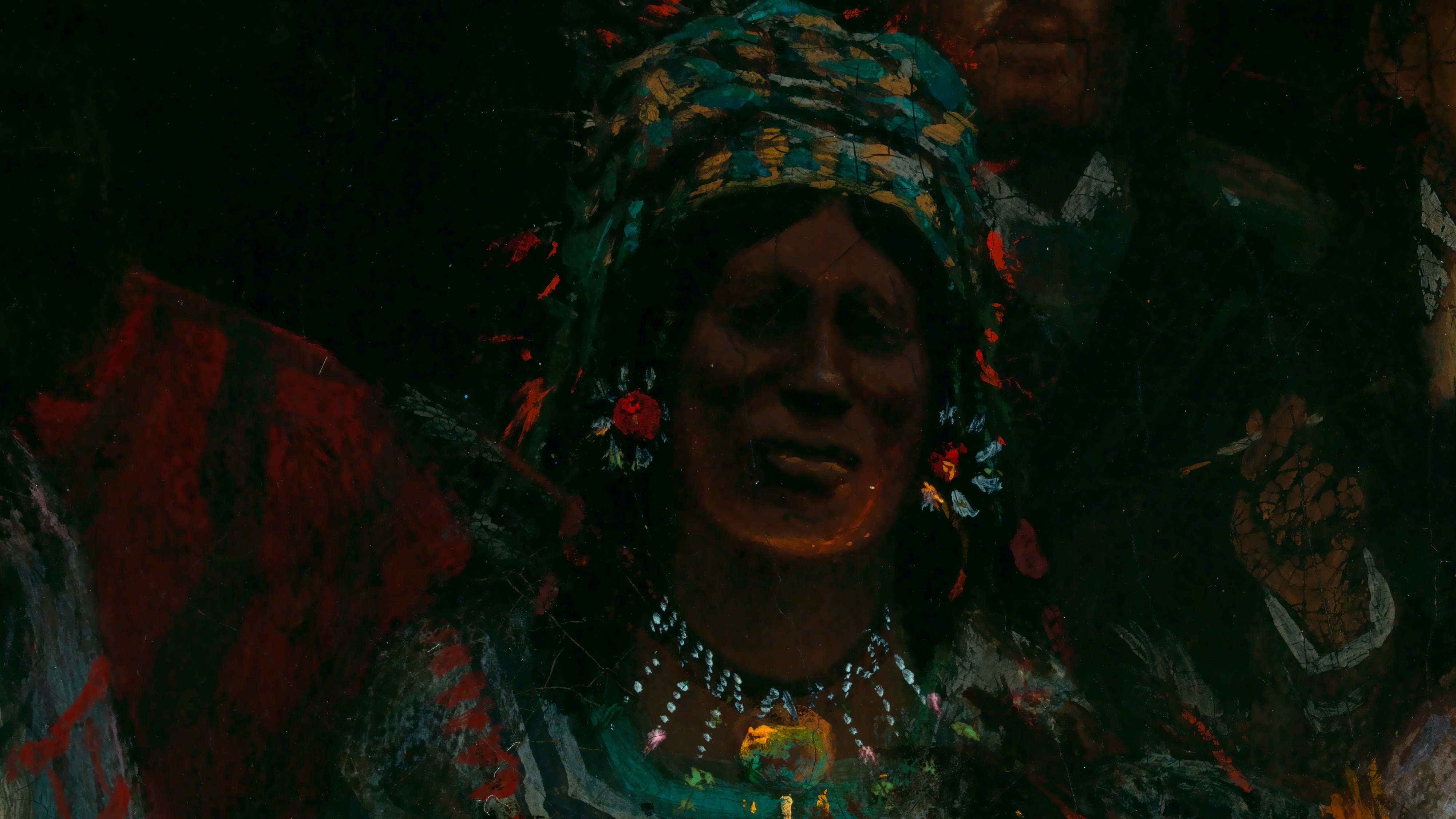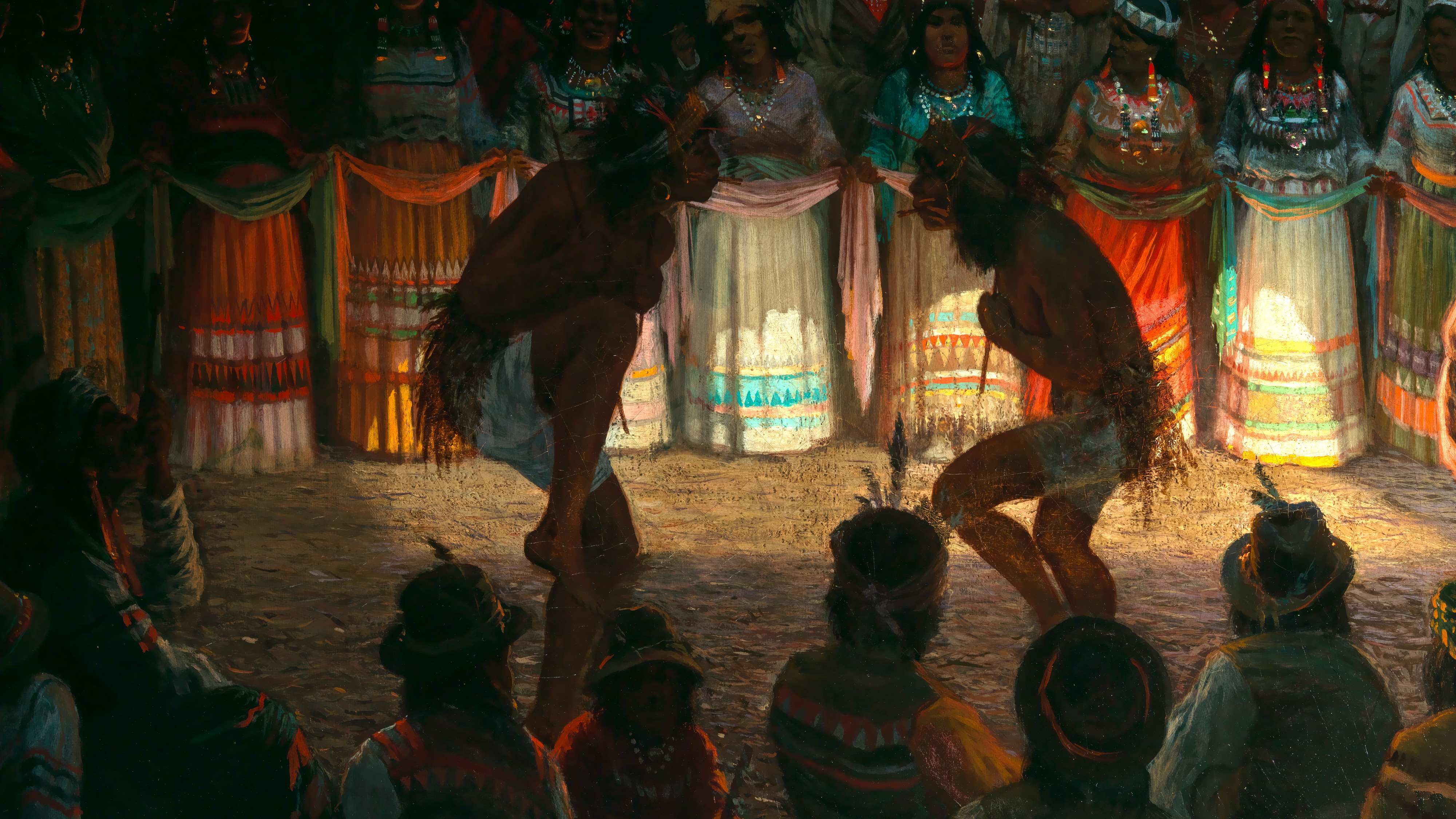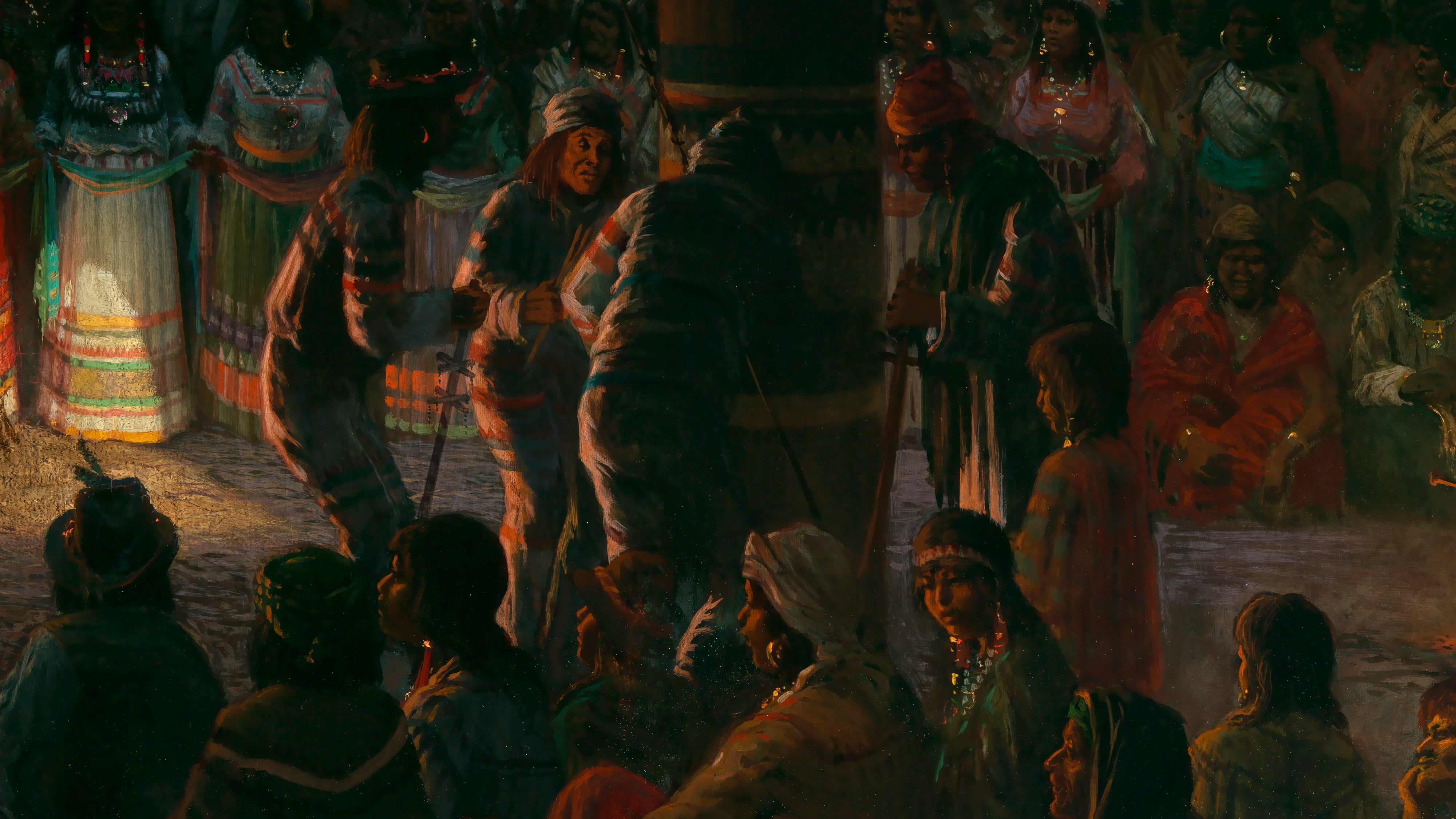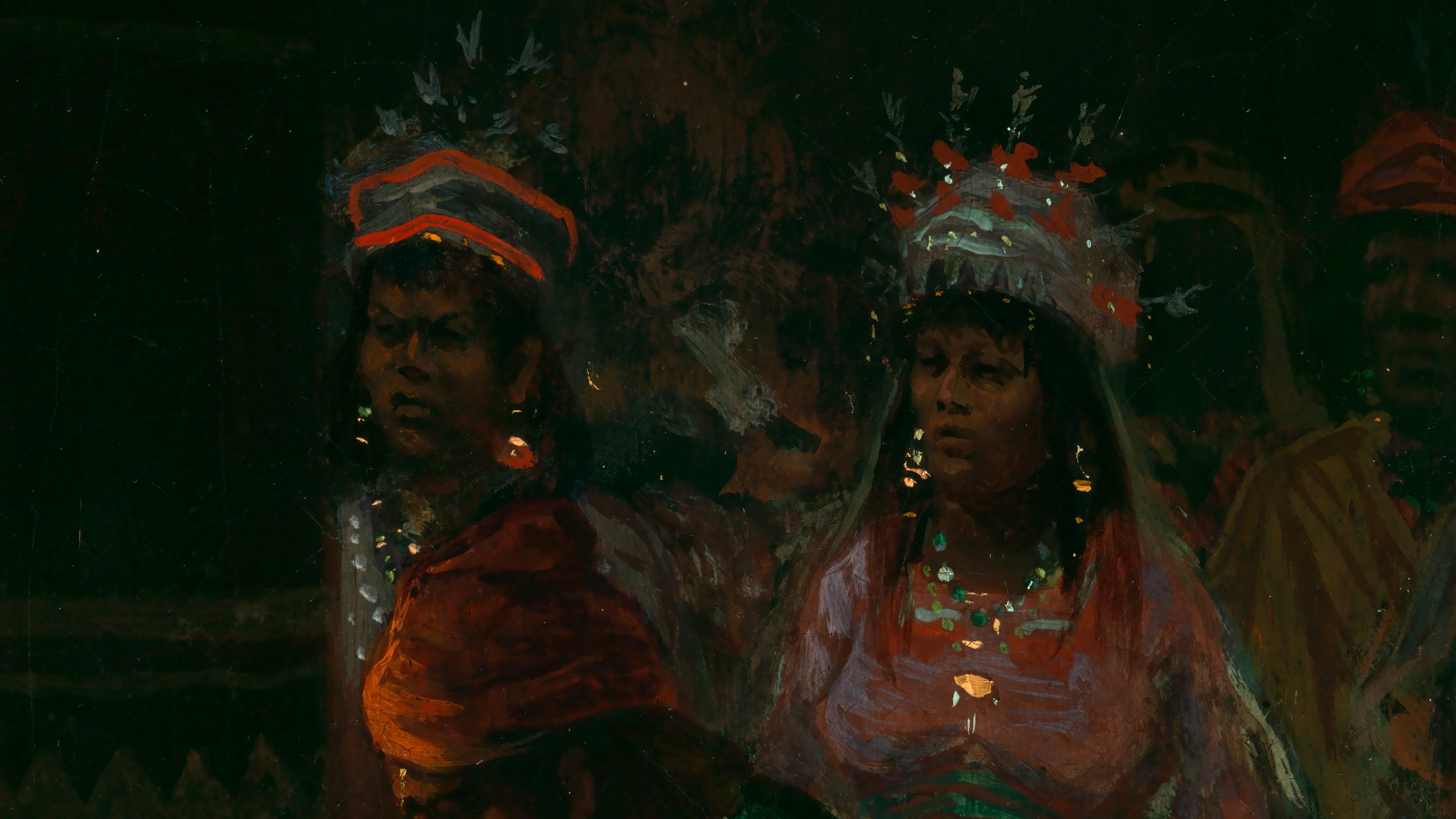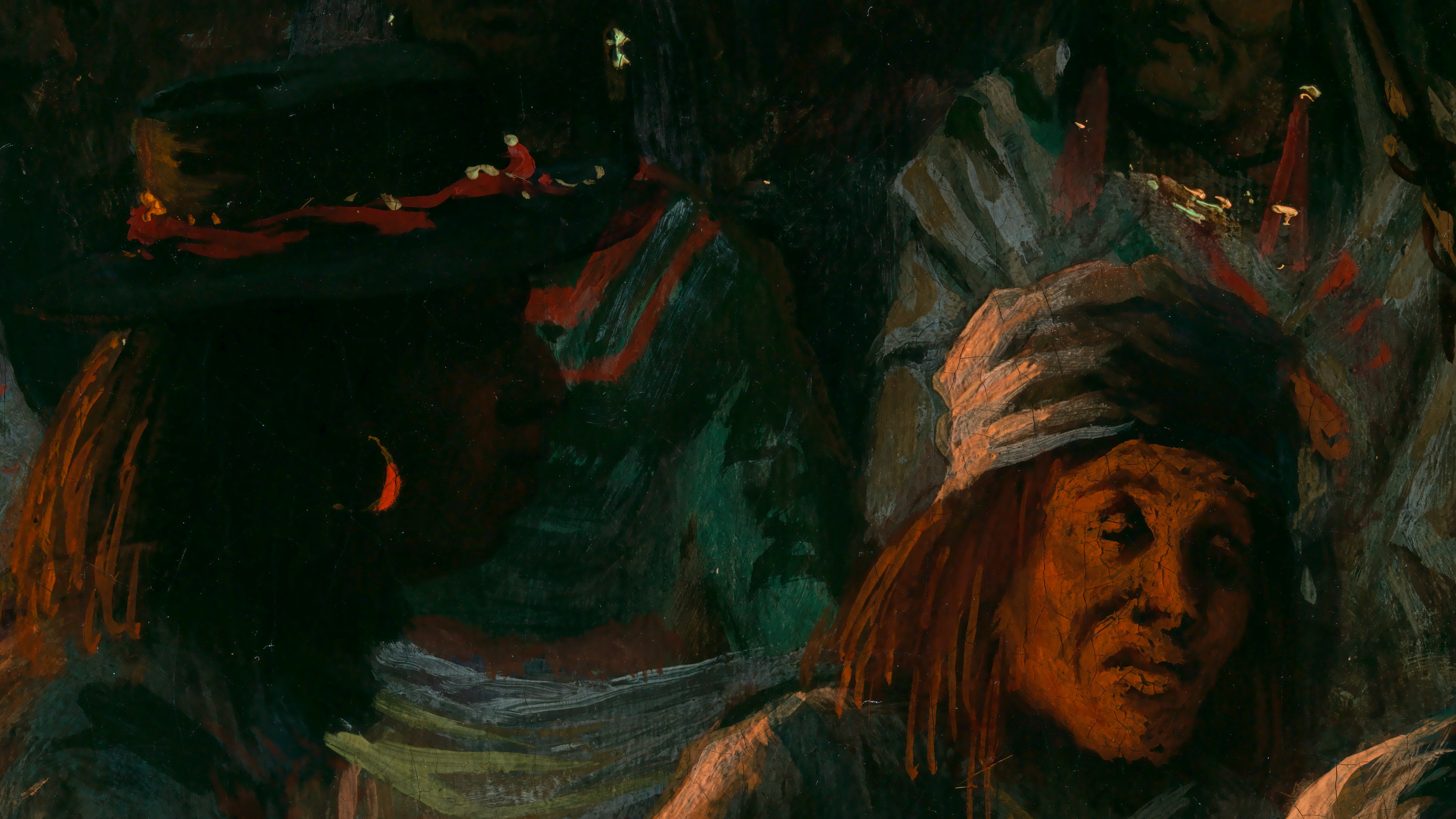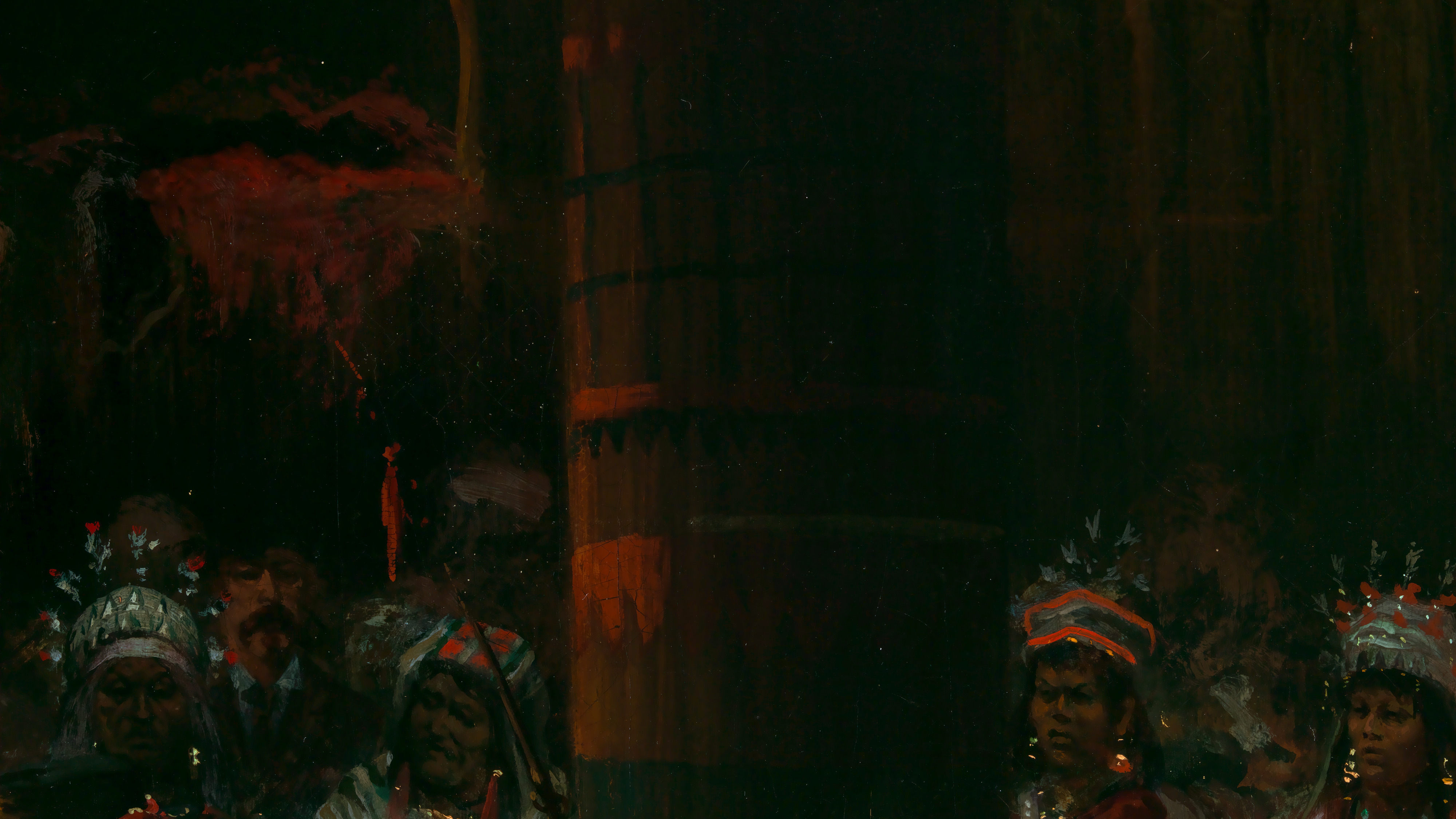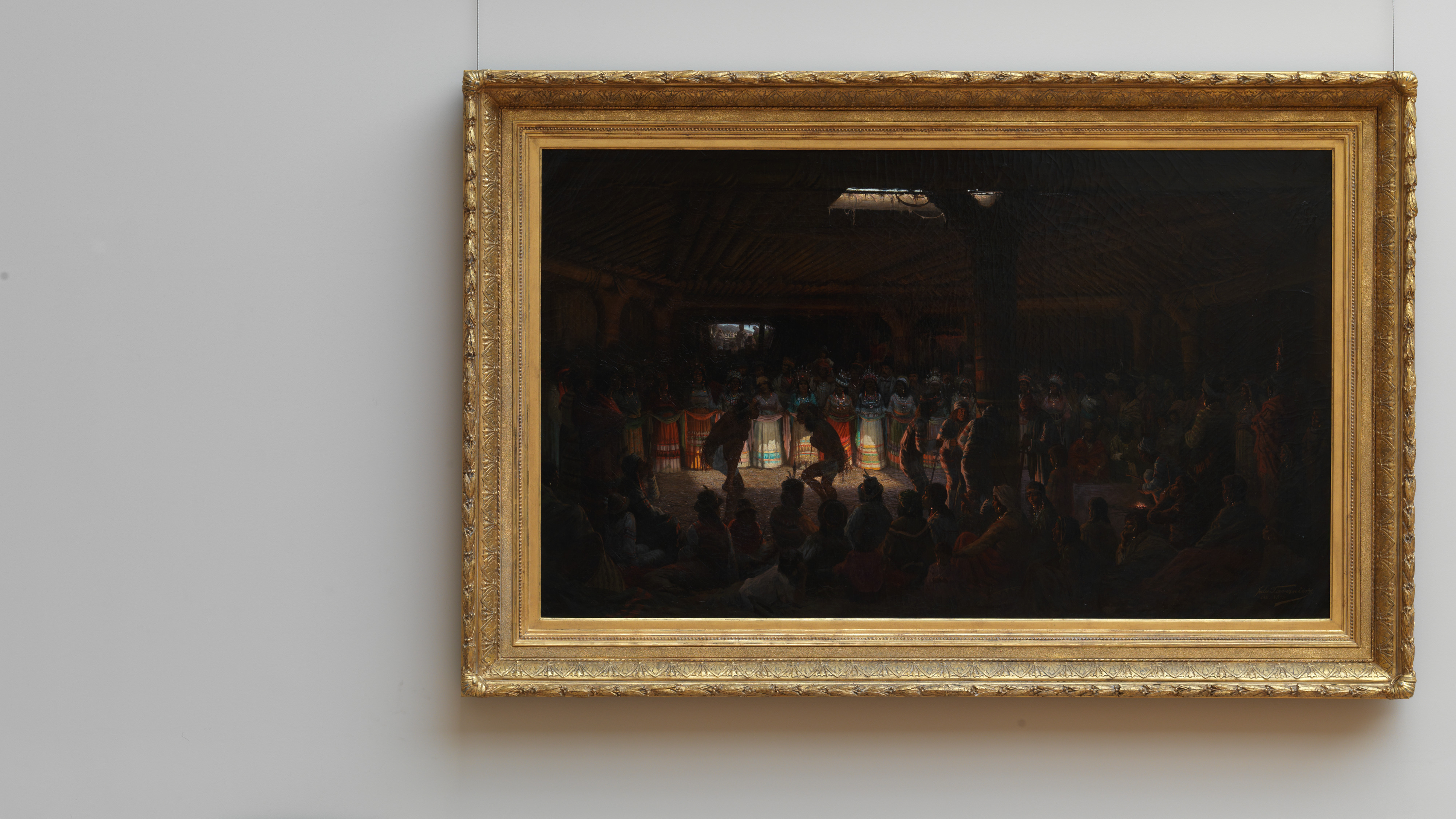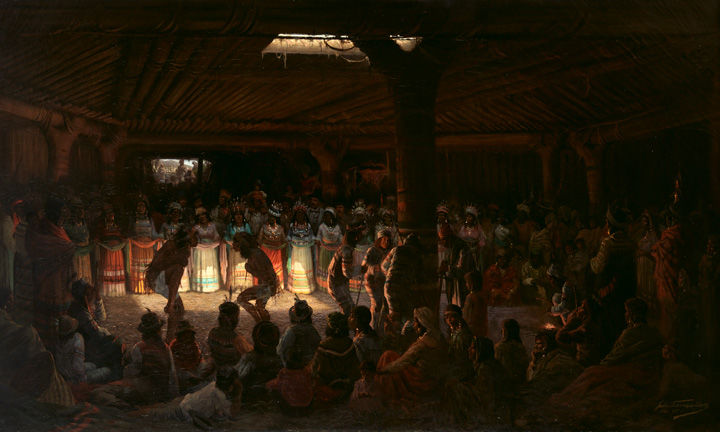Dance in a Subterranean Roundhouse at Clear Lake, California
Jules Tavernier American, born France
Tavernier’s most important commission came from Tiburcio Parrott, San Francisco’s leading banker. During an 1876 visit from his Parisian business partner Baron Edmond de Rothschild and the baron’s traveling companion Count Gabriel Louis de Turenne, Parrott was able to obtain entry to a ceremonial dance of the Elem Pomo, known as the mfom Xe, or "people dance," in an underground roundhouse at Clear Lake. Tavernier spent two years working on this tour de force, a composition with nearly one hundred figures, including Elem Pomo dancers and musicians as well as non-Native onlookers, notably Parrott, Rothschild, and Turenne. He rendered the dimly lit interior—its circular shape symbolic of the life-sustaining form of a basket—with brilliant technical finesse by means of tonal variation and flashes of color. While the painting suggests the rich vitality of Elem Pomo culture, it also exposes the threat posed by White settlers, including Parrott, who was then operating a toxic mercury mine on the Elem Pomo’s ancestral homelands.
Due to rights restrictions, this image cannot be enlarged, viewed at full screen, or downloaded.
This artwork is meant to be viewed from right to left. Scroll left to view more.
